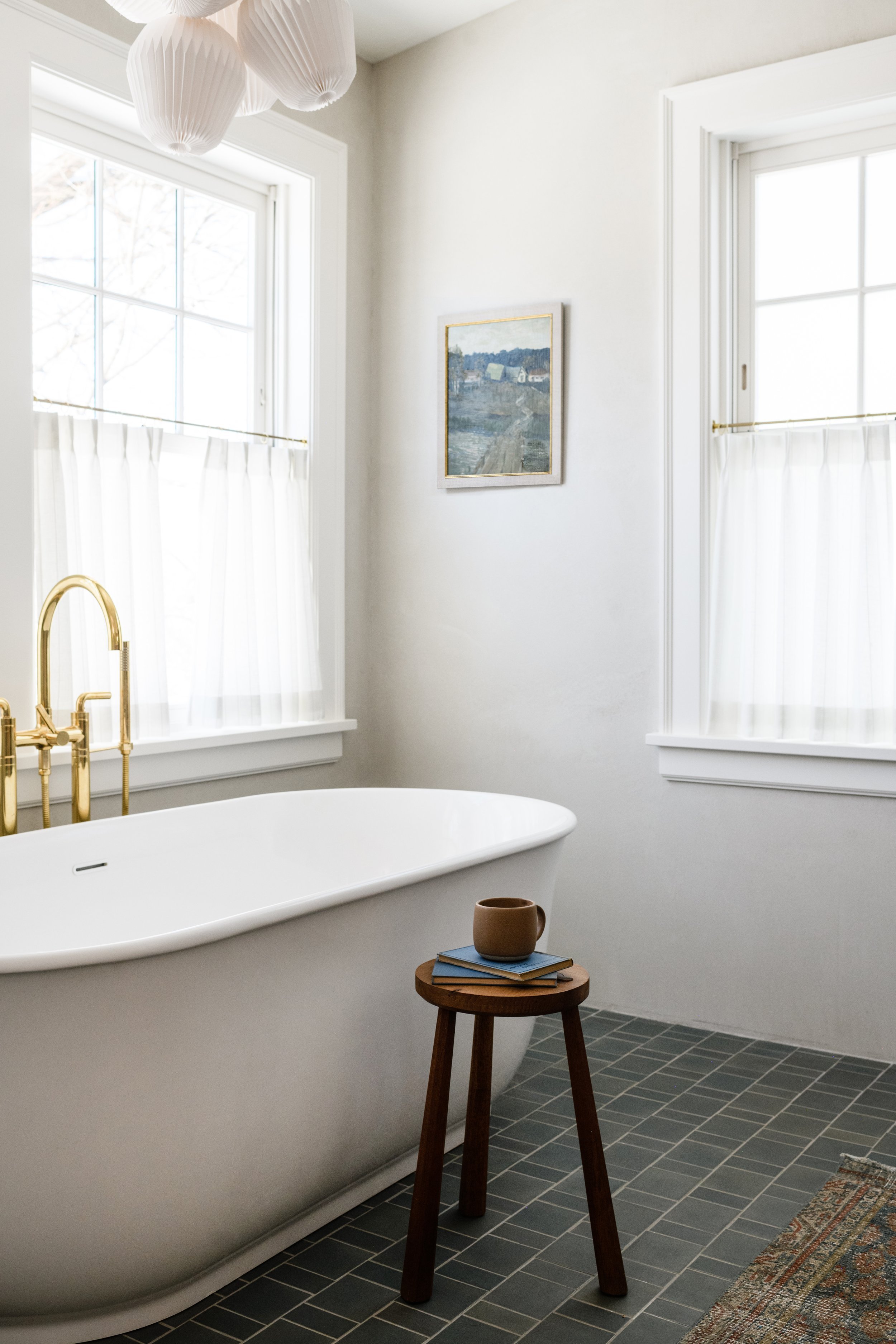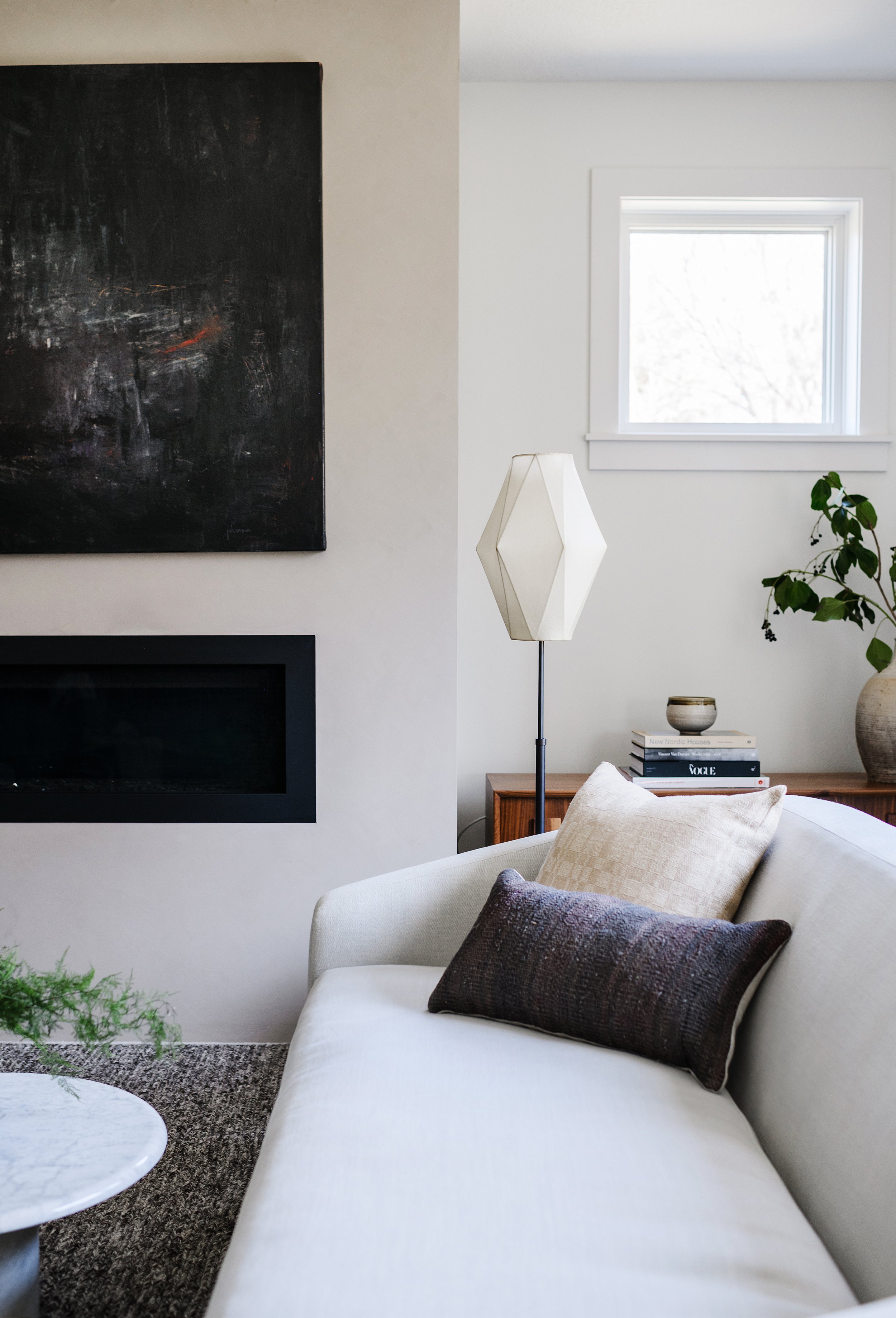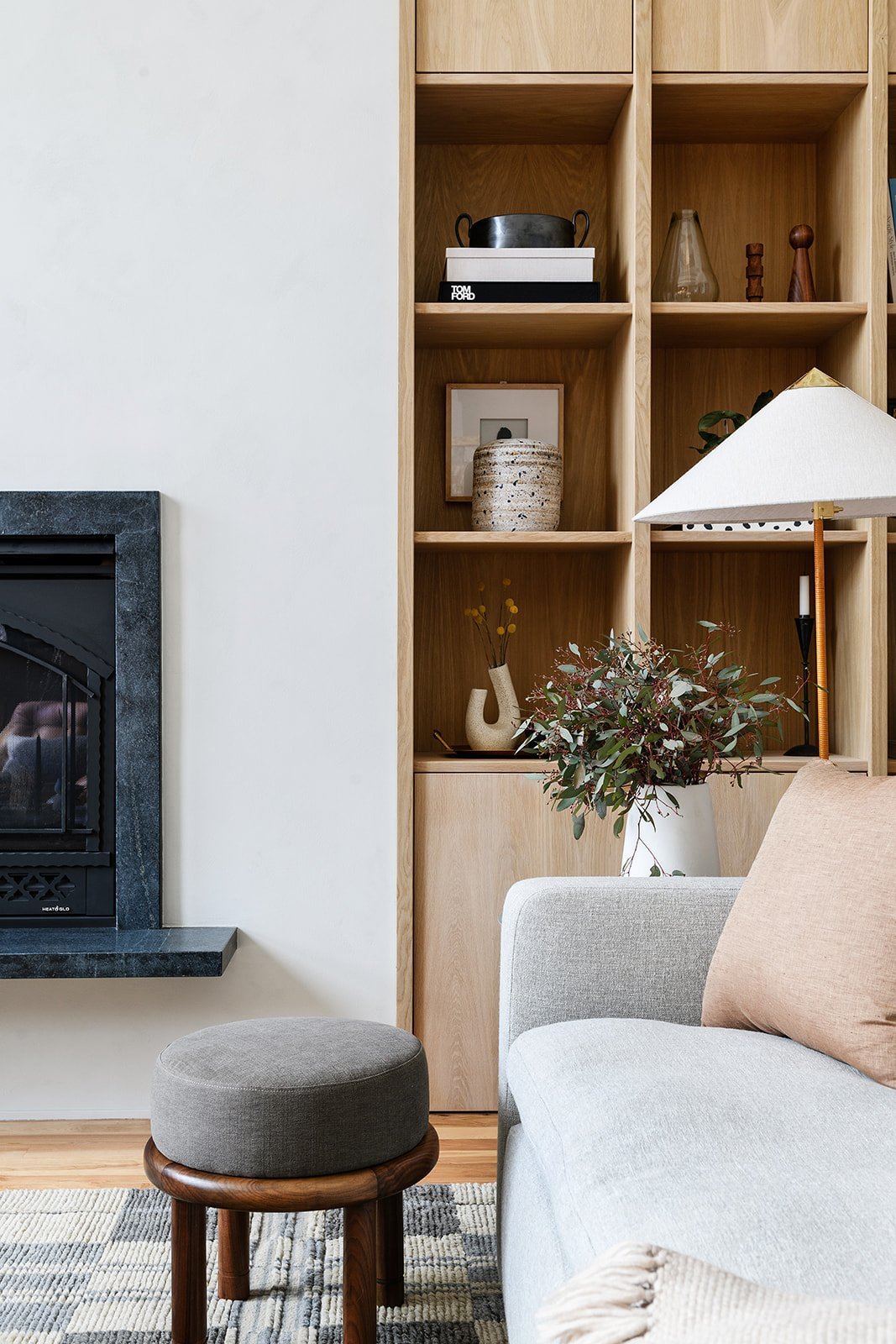Plaster: When + How We Use It
Last summer, we shared our definitive guide to wall treatments, but today we’re honing in on a specific look: plaster. Many of our recent projects have included forms of plaster, and we particularly love the level of visual depth they can bring to a space. While plaster has become an increasingly popular design choice in recent years, it’s certainly more than a passing trend. This type of application dates back centuries, well before the invention of drywall, and continues to stand the test of time.
At our studio, the two types of textural finishes we most commonly use are tadelakt waterproof plaster and natural limewash. We’re going to break down some of the defining features of both, along with examples of when and how we used them. Plaster has been a big topic lately, and we’re excited to discuss why this time-honored wall treatment is making such a resurgence in the design scene.
Project Thomas Ave, Photography by Amanda Birnie
Project Thomas Ave, Photography by Amanda Birnie
Project Broadway Court, Photography by Amanda Birnie
Project Broadway Court, Photography by Amanda Birnie
Tadelakt Waterproof Plaster
When we want a wall finish with subtle movement, we turn to tadelakt waterproof plaster. We love this application for a million reasons related to form and function. As the name suggests, tadelakt is entirely waterproof, making it especially suitable for bathroom and shower walls. Our clients love this treatment for its textural look and seamless finish. We often use this in place of wall tile and grout in bathrooms, and it helps us achieve a modern, clean, spa-like surround.
You might have noticed we’ve been using tadelakt waterproof plaster increasingly often in our work—most recently in our Thomas Ave and Broadway Court primary bathrooms. In both instances, this plaster treatment added so much dimension to otherwise visually flat, dry-walled rooms. The biggest bonus to tadelakt is its long-term durability. When properly maintained, tadelakt will age beautifully and develop a natural patina that looks even better over time. The catch is that tadelakt waterproof plaster must be applied by an experienced plasterer and is definitely not a DIY endeavor. Skilled plasterers can be difficult to find in certain locations, but it’s well worth the effort when it all comes together.
More to Read: Color Study: Saturated Neutrals
Project Paisley Lane, Photography by Amanda Birnie
Project Red Forest Way, Photography by Amanda Birnie
Project Red Forest Way, Photography by Amanda Birnie
Natural Limewash
If you’ve been watching the recent shifts in modern design, you’ve likely noticed the widespread use of limewash. This natural paint technique is an old-world practice, and it’s also incredibly environmentally friendly. Limewash is made of crushed, burned, and dyed limestone mixed with water and has a distinctly chalky, matte finish.
Limewash is best applied to porous surfaces, which is why we particularly love using it on fireplaces. Looking at our Red Forest Way or Paisley Lane projects, you’ll see how we applied limewash from the floor to the ceiling surrounding the fireplace for a beautiful, nuanced finish. Unlike tadelakt waterproof plaster, limewash has less complicated application methods, but we still always work with a specialist. Our talented trade partners know exactly how to achieve the balanced brush strokes we’re going for and get it just right every time.
More to Read: 3 Walls to Use Wallpaper
For more inspiration, follow us over on Instagram to get a look at daily life in the studio. If you would like to connect with us for your design project, we would love to hear from you. You can connect directly by filling out our contact form.
In Case You Missed It
Here are five ways we design with young families in mind.
See how we added character to a builder-grade home.
Get inspired to go bold with our favorite saturated neutrals.
See what goes into the design presentation for Yond Interiors clients.







